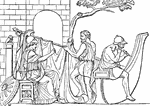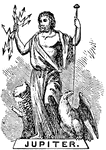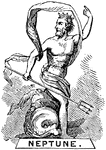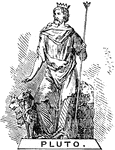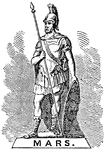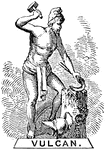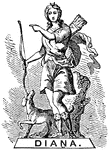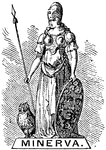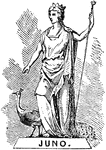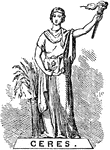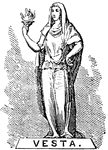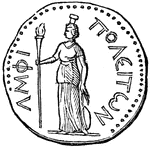Search for "minerva"

Caryatic Order
An order of architecture wherein the entablature is supported by female figures clothed in long garments,…

Parthenon
"The Parthenon is a celebrated temple at Athens, consecrated to Athena or Minerva, the protectress of…

Aegis
"signifies, literally, a goat skin. According to ancient mythology, the aegis worn by Jupiter was the…

Antefixa
"Antefixa representing Minerva superintending the construction of the Ship Argo. Antefixa are terra-cottas,…
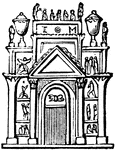
Capitolium
"A small temple, supposed to have been build by Numa, and dedicated to Jupiter, Juno, and Minerva, situated…

Coin of Minerva
"Minerva is often represented on gems and coins, hurling the thunderbolts of Jove. The following cut,…
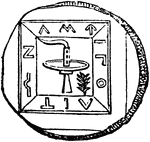
Lampadephoria
"Lampadedromia, torch-race, and often simply, Lampas, was a game common throughout Greece. At Athens…

Spira
"Spira, the base of a column. in the Tuscan and the Roman Doric the base consisted of a single torus,…
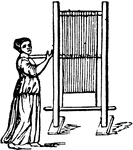
Tela
"Tela, a loom. Although weaving was among the Greeks and Romans a distinct trade, carried on by a separate…
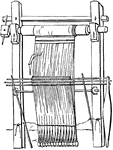
Tela
"Tela, a loom. Although weaving was among the Greeks and Romans a distinct trade, carried on by a separate…
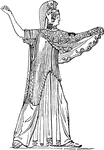
Minerva with aegis
"According to ancient mythology, the aegis worn by Jupiter was the hide of the goat Amalthea, which…
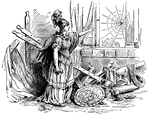
Minerva
"On Minerva's side Varro tells us that Cecrops found an olive tree and a fountain, and that on consulting…

Hercules and Cerberus
"Hercules descended into Hades, accompanied by Mercury and Minerva. He obtained permission from Pluto…

Minerva
"The name of a Roman goddess, identified by the later Graecising Romans with the Greek Athene, whom…
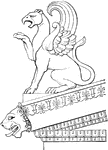
Acroteria from the Temple of Minerva at Ægina
On the apex and two lower angles of the pediment were introduced acroteria, sometimes ornaments of flowers…
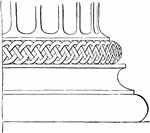
Attic Base in the Temple of Minerva Polias
The so-called Attic base is the form which most frequently occurs; and consists of two tori separated…
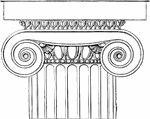
Ionic Capital from the Temple of Minerva Polias at Priene
In the capital the Doric echinus is replaced either by a cyma ornamented with leaves, or, more generally,…
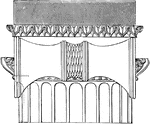
Side View of the Ionic Capital from the Temple of Minerva Polias at Priene
These volutes, or scrolls, when viewed from the side, appear to meet in the middle, and form a wavy…

Section of a Volute of an Ionic Capital
These volutes, or scrolls, when viewed from the side, appear to meet in the middle, and form a wavy…
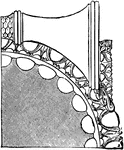
Top View of the Ionic Capital from the Temple of Minerva Polias at Priene
These volutes, or scrolls, when viewed from the side, appear to meet in the middle, and form a wavy…
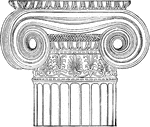
Ionic Angle Column from the Temple of Minerva Polias at Athens, Front
The good effect of the Ionic capital is really only produced by the front-view. It seems calculated…

Ionic Angle Column from the Temple of Minerva Polias at Athens, Side
The good effect of the Ionic capital is really only produced by the front-view. It seems calculated…
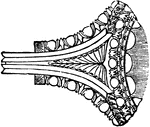
Plan of Ionic Antæ Capital from the Temple of Minerva Polias at Athens
The capital of the antæ and pilasters is without volutes, as is seen here. The shaft has no flutings;…
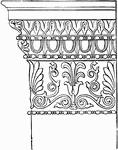
Ionic Antæ Capital from the Temple of Minerva Polias at Athens
The capital of the antæ and pilasters is without volutes, as is seen here. The shaft has no flutings;…
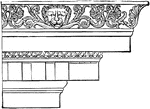
Ionic Cornice from the Temple of Minerva Polias at Priene
The entablature resting on the columns has three parts: a plain architrave divided into two, or more…

Erechtheum with the Pandrosium
Belonging to the time directly after Pericles is the Erechtheum. This is a double temple in the Ionic…
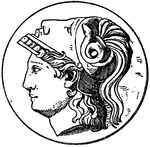
Minerva Head
The Minerva head is a design on the Greek Goddess Athena. This design frequently occurred on medallions.
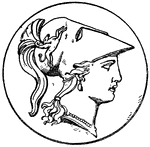
Right Minerva Head
This Right Minerva head is the modern version design of the Greek Goddess Athena. This design frequently…

Dieties
A coin engraved with images of Minerva and Jupiter. Minerva was the Roman equivalent to the Greek goddess…
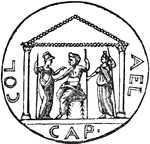
Minerva
A medal representing Jupiter sitting in a temple, conversing with Minerva and attended by Juno.

Medal of Tarsus
A medal of Tarsus which suggest that Minerva, the goddess of arts and sciences, was revered there. In…






